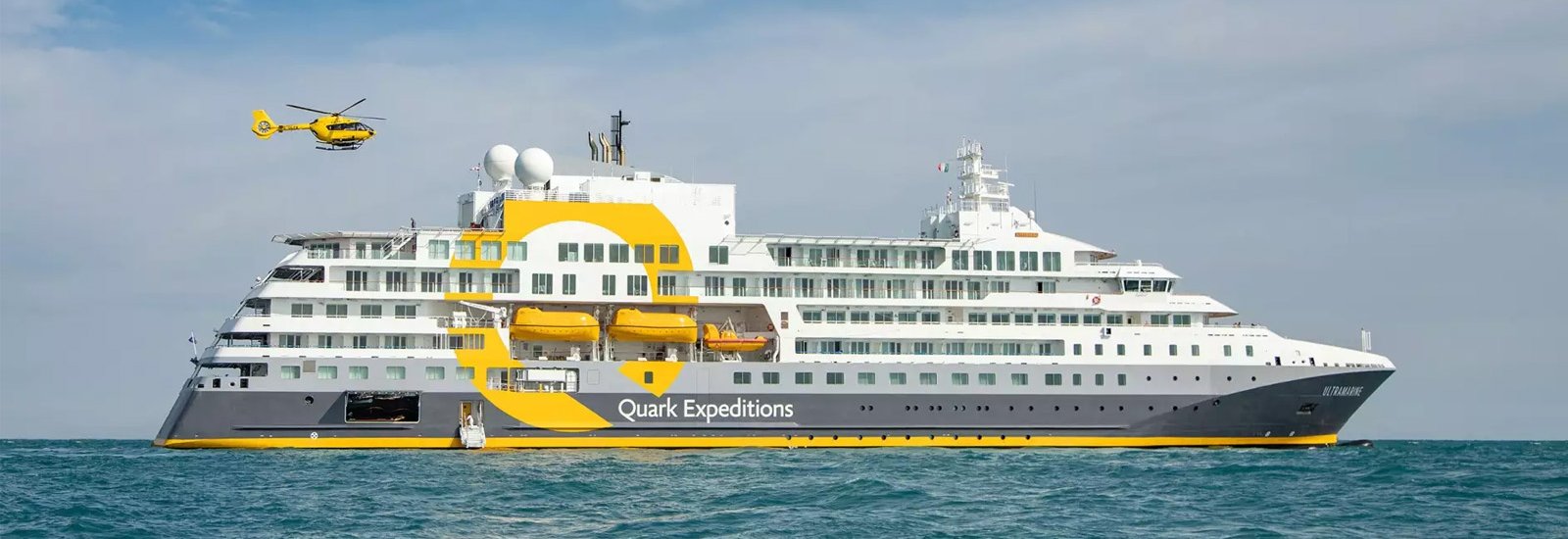Helicopter operations in Antarctic are acutely weather-dependent. We have designed this itinerary so we can spend time each day in stunning locations that allow us to enjoy helicopter opportunities if the weather allows and, alternately, to maximize your experience of Antarctic wildlife, ice and landscapes when flying conditions are not favorable. Each day near the Antarctic Circle will showcase the flexibility and technical prowess of our industry-leading expedition team, pilots and crew, who will look for opportunities to experience Antarctica well beyond its coasts.
As Ultramarine gains access to the Antarctic Circle, you’ll have accomplished an impressive achievement as most expeditions to the Peninsula do not come close to navigating this far south. Toasting the first explorers who ventured here over a century ago, you can raise a glass and take pride in the knowledge you’ve reached part of the world visited by a relative few.
Next on our itinerary are Crystal Sound and Marguerite Bay, which comprise the geographical theater of focus on this incredible venture into the “deep south” of Antarctica. After visiting some of the region’s iconic penguin colonies and glacial features, we continue south into Crystal Sound to cross the Antarctic Circle. Crystal Sound is known for its massive expanse of steep mountains that rise directly out of the sea. We hope to visit Detaille Island and, weather-permitting, fly into the mountains of the Antarctic Peninsula at the Antarctic Circle. Our goal is to visit the British Antarctic Survey's historical hut, and the Adélie penguin colony of Detaillle Island. We also hope to Zodiac cruise in this area to see the colossal icebergs that formed from the glaciers fed by the snowfall in the coastal mountains of Antarctica. Seals frequently roam this coastal area. There will be time to marvel at the impressive topography, which features Castle Peak, a 2,380 meter (7,800- foot) massif. If weather allows, we may add to our marine operations and embark on our flightseeing experiences. What you will have just seen from sea, you will now experience from the sky as you witness the vastness of Antarctica and Crystal Sound.
Continuing further south, we’ll set out toward Marguerite Bay, which is rich in human history, stunning geological features, and expansive ice fields. The bay is separated from Crystal Sound by Adelaide Island. Ice conditions permitting, we may be able to transit slowly through the narrow passage between the mainland and the island. This channel is known as The Gullet, known for pulsing currents that can lodge and dislodge ice throughout the summer months. Keep your eyes focused off-ship for potential marine mammal sightings. To the west of Adelaide Island, the 70-kilometer-long Fuchs Ice Piedmont stretches out like a long ice tongue to east Arrowsmith Peninsula with multiple peaks rising 1,800 to 2,100 meters (6,000 to 7000 feet). We also hope to explore Debenham Islands, named after Frank Debenham, a member of the advisory committee for the British Graham Land Expedition of 1934-37. The six main islands are named after Debenham’s children.






































